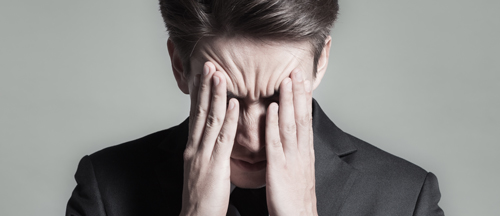|
A migraine is a painful, often debilitating headache that can be accompanied by nausea and an array of other symptoms. Thankfully, migraines can often be prevented and stopped in their tracks.
The key to living with migraines is to recognize the signs that an attack is imminent. About one-third of migraine sufferers experience an aura, a period of visual disturbances characterized by bright, pulsating, or kaleidoscopic lights. An aura may also be accompanied by psychological changes such as anxiety, confusion, and dissociation. People who don’t experience an aura may still notice a change in their mood and energy levels before an attack.

Preventing and Reducing the Occurrence of Migraines
Recognizing the signs that a migraine is on the way can help you figure out what may be triggering it, and finding your triggers will allow you to avoid them. Oftentimes, migraines are triggered by a certain type of food. Try keeping a food journal for a few weeks to a few months and seeing if your migraine attacks correspond with certain foods. Removing these foods from your diet might help prevent or at least lessen the occurrence and severity of your migraines.
Other migraine sufferers find that their triggers are atmospheric. Some people are so sensitive to temperature and pressure changes that, for example, they will experience an aura a full day before a severe rainstorm. While you can’t avoid the atmosphere in the same way that you can avoid food, you can at least keep an eye on the forecast and get a jump on stopping your migraine in its tracks (more on that below).
Because migraines can be caused by a mix of genetic, hormonal, and environmental factors, they can have a variety of additional triggers. Some people experience them because of stress, inconsistent sleep, and even strenuous exercise. Finding ways to relax, fixing your sleeping schedule, and trying some light exercises instead can all potentially help reduce the severity and occurrence of your migraines. Changing your lifestyle to avoid your unique triggers is definitely worth the effort.
Getting Rid of Migraines
If it’s too late for preventative action, then there are many steps you can take to get rid of a migraine. First, it is important to have a painkiller which works for you at the ready. Some people find that over-the-counter medications such as ibuprofen are able to do the trick, but, for others, these painkillers simply aren’t strong enough. Talk to your doctor about what they think may be right for you. There are specific migraine medications available by prescription.
It is also important that you have a dark, quiet space where you can retreat to for a while in order to recover, as migraines are usually accompanied by sensitivity to light and sound. Let yourself rest for as long as you need to, and don’t feel bad if you need to let your friends and family know that you’re not available. Taking care of yourself should be your number one priority.
Migraine sufferers have many different strategies for finding relief and boosting the effects of their medications, such as using a cold compress or taking a cold shower. Some find that smelling or rubbing peppermint oil on their temples can help as well. Caffeine, as long as it is not one of your triggers, can be quite effective in providing relief due to its vasoconstrictive properties.
Learning to live with migraines can take some time, but it is possible. Find your triggers, consult with a doctor so that you can arm yourself with the proper medications, and practice good self-care. Migraine attacks don’t have to control your life.
|